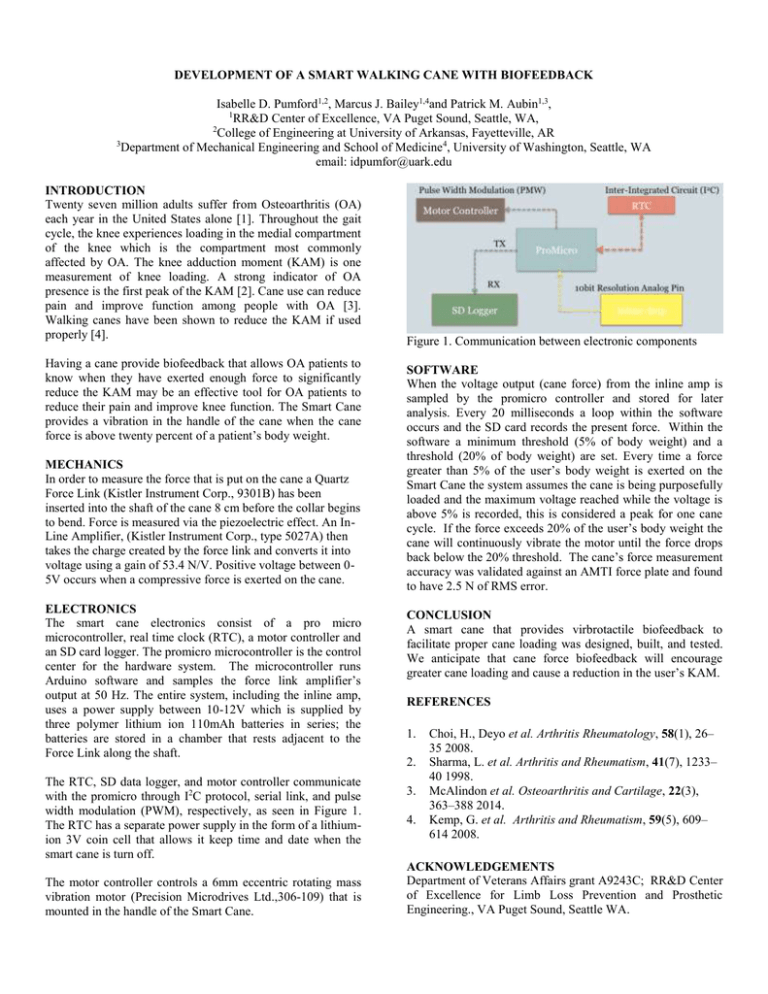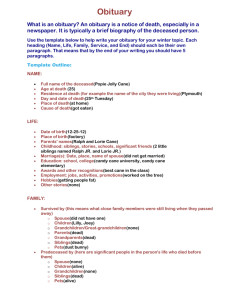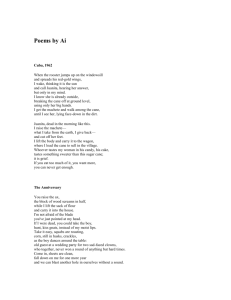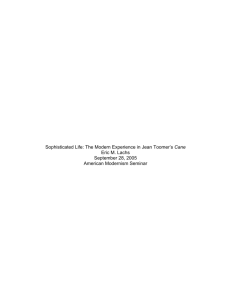Smart Cane YIS Isabelle ver02 PMA
advertisement

DEVELOPMENT OF A SMART WALKING CANE WITH BIOFEEDBACK Isabelle D. Pumford1,2, Marcus J. Bailey1,4and Patrick M. Aubin1,3, 1 RR&D Center of Excellence, VA Puget Sound, Seattle, WA, 2 College of Engineering at University of Arkansas, Fayetteville, AR 3 Department of Mechanical Engineering and School of Medicine4, University of Washington, Seattle, WA email: idpumfor@uark.edu INTRODUCTION Twenty seven million adults suffer from Osteoarthritis (OA) each year in the United States alone [1]. Throughout the gait cycle, the knee experiences loading in the medial compartment of the knee which is the compartment most commonly affected by OA. The knee adduction moment (KAM) is one measurement of knee loading. A strong indicator of OA presence is the first peak of the KAM [2]. Cane use can reduce pain and improve function among people with OA [3]. Walking canes have been shown to reduce the KAM if used properly [4]. Having a cane provide biofeedback that allows OA patients to know when they have exerted enough force to significantly reduce the KAM may be an effective tool for OA patients to reduce their pain and improve knee function. The Smart Cane provides a vibration in the handle of the cane when the cane force is above twenty percent of a patient’s body weight. MECHANICS In order to measure the force that is put on the cane a Quartz Force Link (Kistler Instrument Corp., 9301B) has been inserted into the shaft of the cane 8 cm before the collar begins to bend. Force is measured via the piezoelectric effect. An InLine Amplifier, (Kistler Instrument Corp., type 5027A) then takes the charge created by the force link and converts it into voltage using a gain of 53.4 N/V. Positive voltage between 05V occurs when a compressive force is exerted on the cane. ELECTRONICS The smart cane electronics consist of a pro micro microcontroller, real time clock (RTC), a motor controller and an SD card logger. The promicro microcontroller is the control center for the hardware system. The microcontroller runs Arduino software and samples the force link amplifier’s output at 50 Hz. The entire system, including the inline amp, uses a power supply between 10-12V which is supplied by three polymer lithium ion 110mAh batteries in series; the batteries are stored in a chamber that rests adjacent to the Force Link along the shaft. The RTC, SD data logger, and motor controller communicate with the promicro through I2C protocol, serial link, and pulse width modulation (PWM), respectively, as seen in Figure 1. The RTC has a separate power supply in the form of a lithiumion 3V coin cell that allows it keep time and date when the smart cane is turn off. The motor controller controls a 6mm eccentric rotating mass vibration motor (Precision Microdrives Ltd.,306-109) that is mounted in the handle of the Smart Cane. Figure 1. Communication between electronic components SOFTWARE When the voltage output (cane force) from the inline amp is sampled by the promicro controller and stored for later analysis. Every 20 milliseconds a loop within the software occurs and the SD card records the present force. Within the software a minimum threshold (5% of body weight) and a threshold (20% of body weight) are set. Every time a force greater than 5% of the user’s body weight is exerted on the Smart Cane the system assumes the cane is being purposefully loaded and the maximum voltage reached while the voltage is above 5% is recorded, this is considered a peak for one cane cycle. If the force exceeds 20% of the user’s body weight the cane will continuously vibrate the motor until the force drops back below the 20% threshold. The cane’s force measurement accuracy was validated against an AMTI force plate and found to have 2.5 N of RMS error. CONCLUSION A smart cane that provides virbrotactile biofeedback to facilitate proper cane loading was designed, built, and tested. We anticipate that cane force biofeedback will encourage greater cane loading and cause a reduction in the user’s KAM. REFERENCES 1. 2. 3. 4. Choi, H., Deyo et al. Arthritis Rheumatology, 58(1), 26– 35 2008. Sharma, L. et al. Arthritis and Rheumatism, 41(7), 1233– 40 1998. McAlindon et al. Osteoarthritis and Cartilage, 22(3), 363–388 2014. Kemp, G. et al. Arthritis and Rheumatism, 59(5), 609– 614 2008. ACKNOWLEDGEMENTS Department of Veterans Affairs grant A9243C; RR&D Center of Excellence for Limb Loss Prevention and Prosthetic Engineering., VA Puget Sound, Seattle WA.






